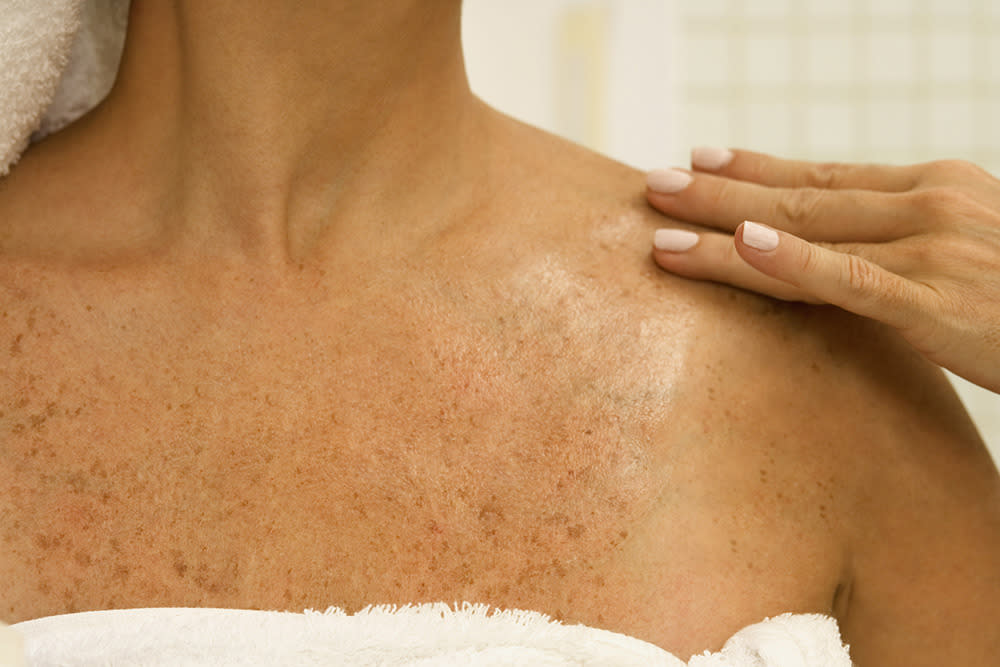Why Your Dark Spots Aren’t Going Away

Getting your dark spots to fade away is simpler than you might think. (Photo: Getty Images)
Nothing can be more annoying than getting a zit. Not so much for the bump or redness, but because of the deep, brown spot that will inevitably linger for weeks or even months, way after the pimple has been dealt with.
Tired of the dark spot cycle, Yahoo Beauty consulted Miami-based dermatologist Leyda E. Bowes to find out why this happens and how to clear up those spots faster and smarter.
What are those dark spots?
The condition is called post-inflammatory hyperpigmentation (PIH), and it’s insanely common among all skin tones. The spots typically appear after your skin has experienced some type of inflammation (acne, mosquito bites, or other traumas). Once your skin becomes inflamed, the cells responsible for making pigment become active and the sun darkens those areas. If your skin is lighter, the marks may look pinkish; if your skin is deeper, the marks can look purplish or brown.
Why do they take forever to go away?
Chances are you aren’t wearing proper sunblock. Bowes recommends a minimum of SPF 30 not only with zinc and titanium dioxide, but also iron oxide (usually in tinted sunscreens) to block out visible light (think the flash on your cellphone camera and even your computer screen). “It is now well-known that visible light and heat can stimulate pigment cells to produce more melanin and therefore cause worsening of dark spots,” says Bowes.
Your skin care regimen might also be to blame. “Trying to scrub those marks off with your exfoliator will worsen the pigmentation,” Bowes warns, “as the skin can become rougher in those areas and appear darker. Using excess toners and astringents can cause the skin to become inflamed, and lead to darker marks as well.”
How can we get rid of dark spots quickly?
Sunscreen is a must. But also, look for over-the-counter products with ingredients like vitamin C, arbutin, kojic, glycolic, and lactic acids. Try: Ole Henriksen Power Bright ($55), First Aid Beauty 5 in 1 Face Cream SPF 30 ($40), Drunk Elephant T.L.C. Framboos Glycolic Night Serum ($90), or Colorescience Sunforgettable Loose Mineral Sunscreen Broad Spectrum SPF 50 ($64). Although vitamin C and arbutin are safe during the day, the others are best applied at night. And when first using, apply every other night to see how your skin reacts. Some side effects can include dryness or redness.
If OTC treatments aren’t working, Bowes recommends visiting a dermatologist. A higher dosage of hydroquinone may be prescribed, or even an in-office glycolic peel. If you want something a little more high-tech, the Fraxel Dual Laser removes microscopic areas of the skin with excess abnormal pigmentation, allowing new pigment cells to develop for blemish-free skin. This treatment will set you back between $500 to $1,000, but you should see great results with two to five sessions, and it’s safe for all skin tones.
Let’s keep in touch! Follow Yahoo Beauty on Facebook, Twitter, Instagram, and Pinterest.
